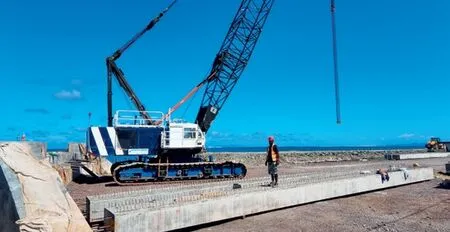Understanding What China Calls the ‘New Era’
2022-08-30ByJosefGregoryMahoney
By Josef Gregory Mahoney
In Chinese political discourse today,we commonly hear that we’re now living in a “new era.” This description is expressed most directly in the governance philosophy known as Xi Jinping Thought on Socialism with Chinese Characteristics for a New Era. It means guiding principles developed since Xi became general secretary of the Communist Party of China (CPC) Central Committee in 2012. It was included in the preambles of both the Party and national constitutions in 2017 and 2018, respectively.
Place in time
As a Marxist-Leninist Party, the CPC pays special attention to history. Marxists are historicists, which means they orient themselves in part by understanding their place in time. This is because they understand progress as a process of historical development,where well-organized human agency can successively resolve various challenges and advance the popular cause.
On the one hand, historicism can be as simple as needing to know where we’ve been and where we are now in order to better ensure we get to where we want to go. On the other hand,actually knowing history—particularly in a nation with the world’s largest population and by some estimates the oldest living civilization—is a both monumental and necessary task.
One of the ways the CPC expresses its understanding of time is by demarcating different generations of collective leadership.There are five of these, starting with Mao Zedong, followed by Deng Xiaoping, Jiang Zemin, Hu Jintao and now Xi.
When the CPC speaks of a new era, it doesn’t emphasize generational differences defined by specific leaders. We can see this above all in the CPC’s three resolutions on its own history,approved in 1945, 1981 and 2021.The first assessed the CPC’s historical situation following the defeat of Imperial Japan and the pivot to civil war. The second drew a line from 1949 to 1981, from winning the civil war and founding the People’s Republic of China (PRC) to the first few years of the reform and opening-up period.
In the third and most recent resolution, the term “new era” is used 46 times in its English translation. On the one hand, as noted above, a new era started in 2012,and was formally recognized in the Party and national constitutions in 2017 and 2018. On the other hand,a major milestone was reached in 2021. That’s when China declared it had accomplished one of its major development goals—becoming a, or moderately prosperous, society—along with advancing new reforms and articulating new development goals,and doing so in the broader context of rising as a global power in the world facing new challenges and opportunities.
Bridging past,present and future
Arguably, reaching thegoal more than any other factor defines the new era. It corresponded with eliminating extreme poverty nationwide as well as other development and social progress metrics. Further, theachievement corresponded with the 100th anniversary of the Party’s founding, which has long been described as the first centenary goal.
Achievingwas the first step before advancing to the second centenary goal by 2049, which will mark 100 years since the establishment of the PRC. By then the CPC aims to reach a new threshold of national rejuvenation, sometimes described as becoming a great modern socialist country.The resolution also makes it clear there are intermediate objectives that must be reached by 2035, and this new era is one in which new reforms are underway to ensure the nation transition appropriately in its long-term development strategy.
Examples of new reforms include those associated with the double development dynamic, which aims to sustain exports as much as possible while creating more sustainable domestic-led growth. Other examples include increasing renewable energy usage and promoting green development, and continuing to improve conditions in rural areas. They also include trying to avoid problems encountered by other countries as they’ve reached comparable stages of development, especially as they transition away from low-paid and lowskilled labor, including the dreaded “middleincome trap,” which can lead to stagnation and even declines if poorly managed.

The construction site of a seaside road, being built by a Chinese company within the framework of the Belt and Road Initiative, in Suva,Fiji, on June 5
As the 2021 resolution asserts: “In the new era, the international balance of power is undergoing profound adjustments, unilateralism, protectionism, hegemonism, and power politics are posing greater threats to world peace and development, and the backlash against globalization is growing. The world has entered a period of turbulence and transformation.”
Many have described China as transitioning from being a major nation () to becoming a great nation (). This is a simple statement of fact—acknowledging China’s rise and its growing global position. In this context, as the historical resolution states,China aims to “foster a new type of international relations and build a human community with a shared future.” These two quotes proclaim China’s determination to improve the international landscape in tandem with Chinese security and sovereignty, pushing back against the old models of hegemony and imperialist ambitions by seeking positive solutions to both emerging and longstanding problems facing the nation and others worldwide.
These efforts include advancing “winwin” development schemes associated with the Belt and Road Initiative, promoting international peace, resisting military blocbuilding and countries seeking hegemony over others, and reforming international organizations to produce true multilateralism.
These efforts also correspond with China’s growing international leadership role in combating global warming and new disease outbreaks. As the historical resolution also makes clear, China has embarked on a new era of climate governance, one that pledges to have its carbon emissions peak before 2030 and reach carbon neutrality before 2060. Likewise,it includes China’s unequaled efforts to fight and recover from new disease outbreaks like COVID-19 at home and abroad. Indeed, many will easily recognize that we are living in a new era, given their direct experiences with new forms of extreme weather and the pandemic;but these developments are merely two facets of a bigger shift in time.
Per the Marxist concept described as “negation of the negation,” we move through time by progressively addressing the challenges facing our needs for progress and social justice. On the one hand this means change, even breaking in some ways with past practices as we achieve some of our goals and improve our capacity to reach new ones. These transitions are often described as new historical eras as well as distinct generations of political leadership.
On the other hand, this Marxist concept also stresses continuities, of building on previous achievements as stepping stones toward a better future. One cannot simply erase one’s past, and trying to do so would undermine the advantages associated with historicism. The CPC likewise signals the same when it describes the new era. It directly acknowledges the past, explicitly describes the present, and charts a course for the future.In this respect, the new era is less a rupture in time than one that aims to bridge in positive ways China’s past, present and future. BR
